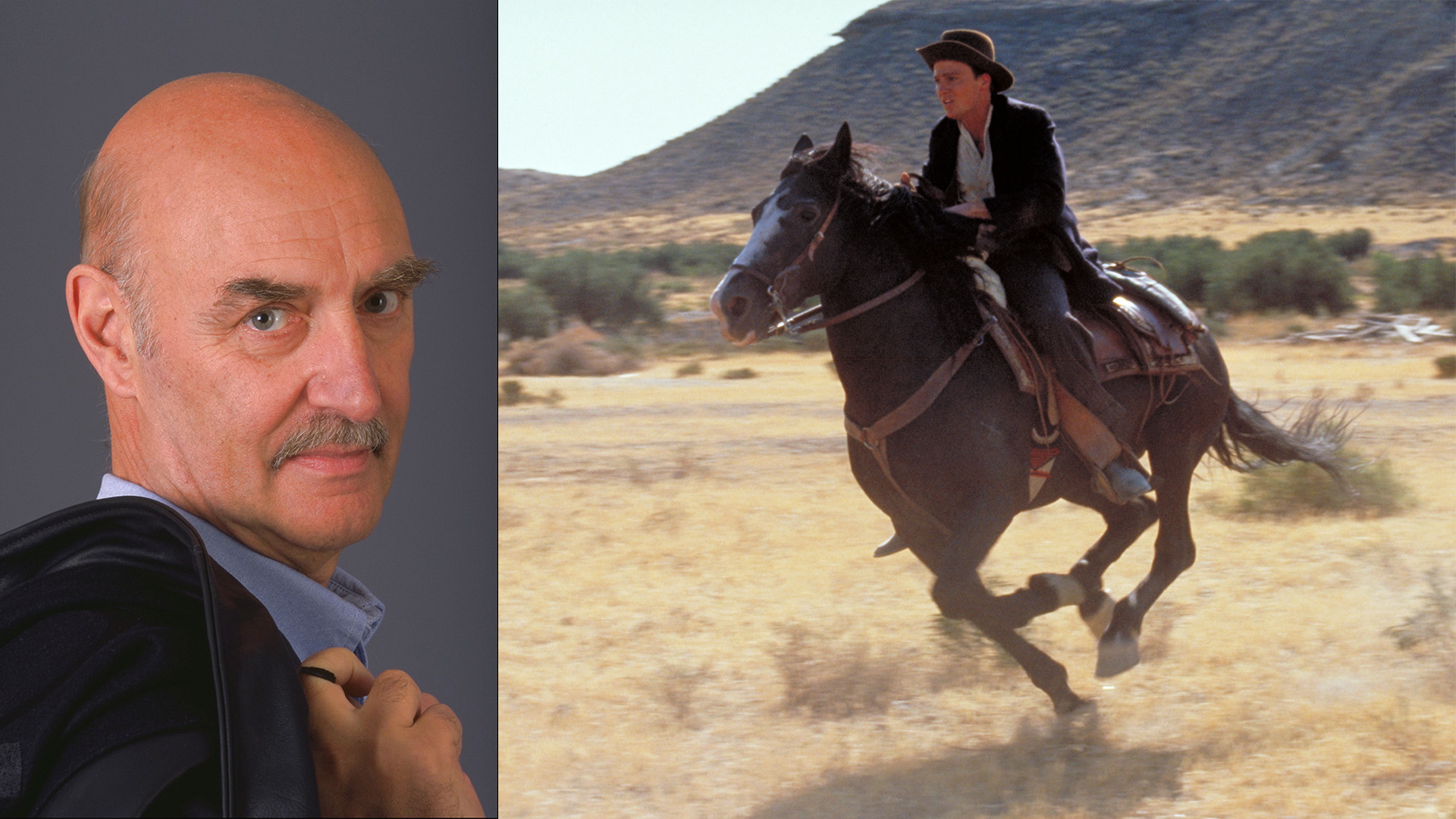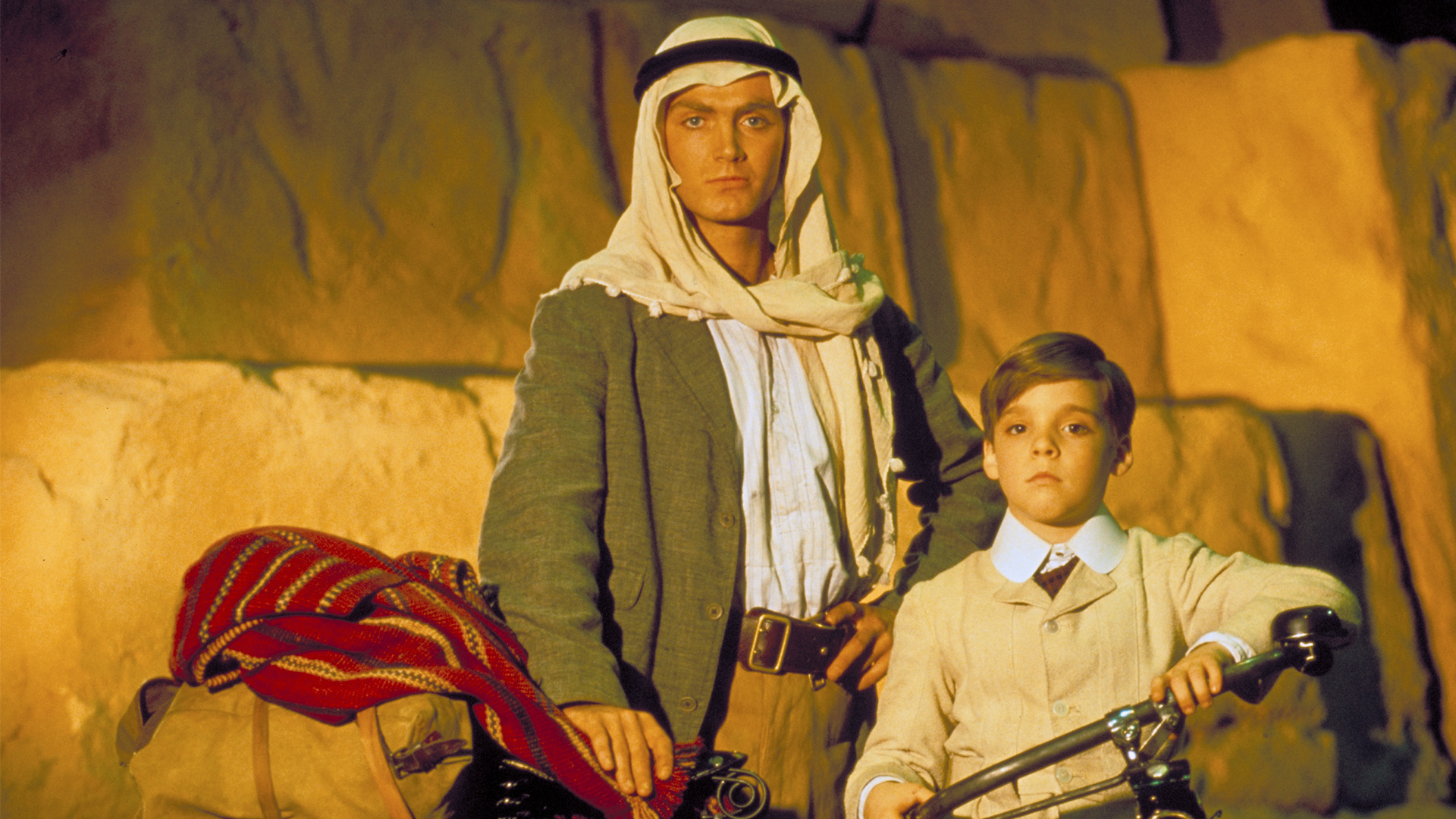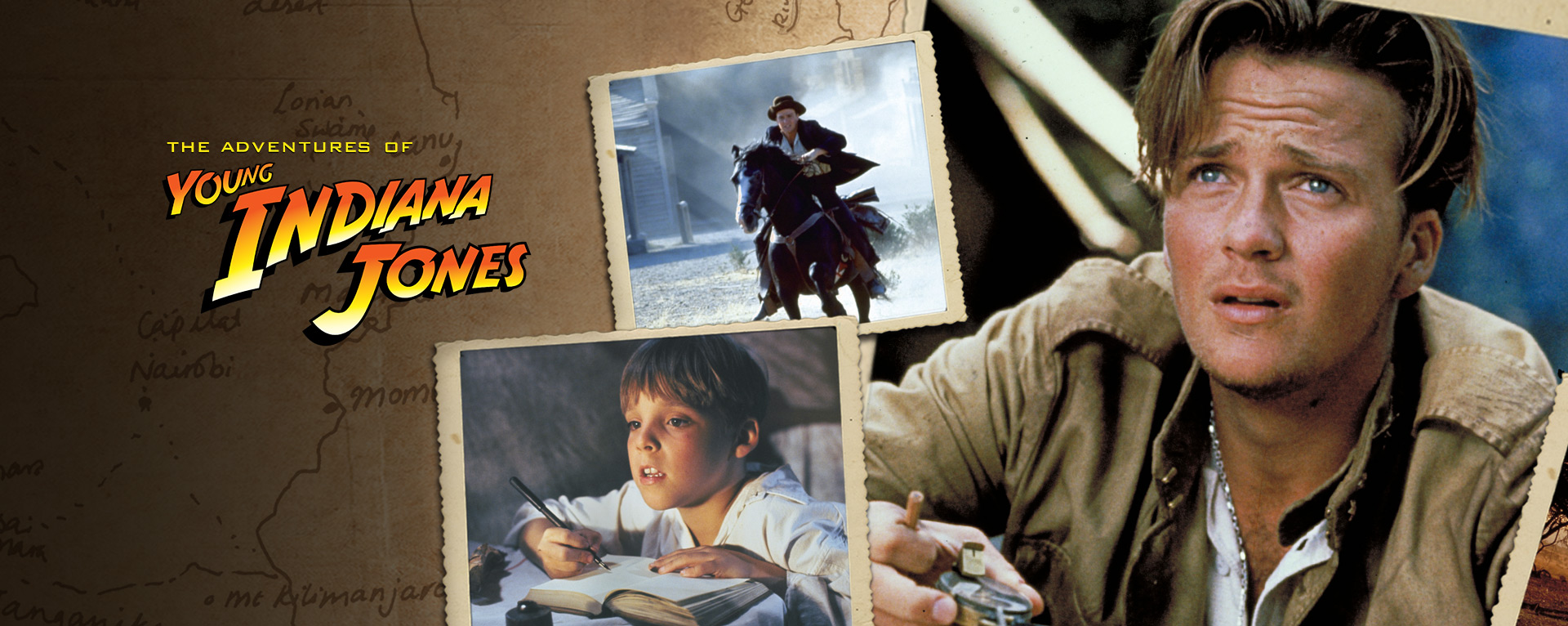Screenwriter Jonathan Hales on Helping Create Young Indiana Jones
The storyteller discusses meeting George Lucas, the genesis of the innovative series, and much more.
In 1990, Lucasfilm recruited a small group of screenwriters to help George Lucas realize his latest dream: a television show about the childhood of one of his most popular creations, Indiana Jones, that helped inspire young viewers to learn about history. After first airing in the 1990s, The Adventures of Young Indiana Jones have now returned on Disney+, where a new generation of viewers can discover this unique Lucasfilm production.
Englishman Jonathan Hales was among the original group of screenwriters recruited to help write the many adventures in Young Indy. Among his contributions was the series’ premiere episode, depicting Indy’s visits to Egypt and Mexico. Hales’ Lucasfilm journey would continue as co-writer of Star Wars: Attack of the Clones (2002). Last year, as Young Indy celebrated its 30th anniversary, he shared his memories with Lucasfilm.com, which are now made available for the first time.
Note for readers: The Adventures of Young Indiana Jones was originally broadcast between 1992 and ‘96 with a different episode format than the current structure now in use on Disney+. At times, additional information is provided to clarify the episodes being discussed.

Lucasfilm.com: Touching on your background before you started working on the Young Indy series, could we ask about your familiarity with Lucasfilm’s productions leading up to that time?
Jonathan Hales: I’d seen the first three Star Wars movies and the first two Indiana Jones movies. I had seen them purely as a moviegoer.
Speaking about your career itself, you appear to have had an interesting mix of experiences between theater, film, and television. Could you summarize a little about what you’d been doing, and do you feel that there was anything specifically that made you a strong candidate for Young Indy?
I started in theater, both writing plays and directing them. I wrote a lot for television and then moved into feature films. I didn’t necessarily want to do features because I liked them too much! One of the things that might have helped with Young Indy was that after I went to university in England, I went to the University of Texas in America. I did a lot of traveling around the States while I was there. That experience helped me, and I did talk about it with George Lucas. My living experiences and some of the interests I had fitted within the scheme for the series.
You were interested in history, correct?
Yes, I’d done a lot of reading and had information that was useful. I knew about Mexico, the First World War, and these different topics.
In your initial discussions about the series, how was it explained to you?
Quite simply, I was living in London and my agent telephoned me explaining that George Lucas was coming to town with an idea for a new television series. Of course, I was interested in meeting him. I went to the Pall Mall area of London, and met with George and [producer] Rick McCallum. George explained that he wanted to do a television series about young Indiana Jones, which would cover a large part of the 20th century, because that was Indy’s lifetime. He wanted it to have an education aspect. That was important to him. I liked the sound of that very much. It wasn’t much more than that. We met for about 20 minutes. I was their first meeting that day, and they had a list of other writers they were meeting with, and I remember trying to read the list upside down across the table to read the names of the other people! After about five or six days, my agent phoned up and said, “They want you to do it.”
Did you start work on the series before you came to California?
No. I can’t remember how long it was, maybe five or six weeks, before we all went out to San Francisco and Skywalker Ranch. Five British writers went out. [Lucasfilm research librarian] Debbie Fine had sent us all a big folder with information about Northern California, which was very nice, but that was it.
So you arrived at Skywalker Ranch with only a general idea of what the series was going to be.
Yes.
Could you tell us more about this group of writers? How did these men and women work together, and did you know any of them previously?
I didn’t know any of them previously. We were a disparate group coming from Britain. Matthew Jacobs was a director/writer who had done some interesting work for the BBC. Rosemary Anne Sisson had started off writing plays. She was very bright and lively, and had written a number of television shows, including a very popular one over here called Upstairs, Downstairs, which was similar to what Downton Abbey is today. Reg Gadney was a novelist who’d also written a series about John F. Kennedy for British television. Gavin Scott had been a local television reporter. When we arrived in San Francisco, we were met at the airport by Jonathan Hensleigh, who was the one American in the initial group of writers. There were six of us to begin with, and then soon after, Frank Darabont arrived from Hollywood. Later, another American named Jule Selbo joined us. We all had different ranges of experience.
What was the workflow like when you were at the Ranch?
We’d come out to the Ranch for two weeks at a time. Upon arrival, we’d be given a folder of research notes on the specific period and historical personalities that we were going to talk about the next day. We had a bit of homework that night before. Then we would meet the next morning in George’s office, and we’d talk about the characters, the period, maybe the particular incident that was going to be the central part of the episode. Then after lunch, we would construct an outline for the episode, which consisted of 16 main scenes, four per act, as it were. At four o’clock, someone from the kitchen would bring tea in on a trolley with little cakes. It was delightful, and then we’d go on until we finished, usually around six o’clock. Afterwards, we’d go back to the guest house and have dinner together, and retire back to our rooms and do our homework for the next day (or not do our homework depending on how lively and conscientious we all were).
At the end of two weeks, we had 14 episodes outlined. On the last day, we would all write down the two episodes we each wanted to do and give it to George. He then had his own little secret chart where he decided which episodes we were going to get. Curiously, it tended to work out as we wanted. We often got our first choice, and often our second choice. Only once can I remember an occasion where George had to allocate episodes to someone who didn’t choose them (that happened to me). Then we would all go home and write our two episodes, and send them into the Ranch. A couple of months later, we’d all meet again, having read each other’s scripts, and talk about them. People would throw in suggestions and criticisms. When that was done, we’d go home and write the final draft of the script.
It’s remarkable how fast the group was able to pull these outlines and scripts together.
Thinking about it now, it’s extraordinary. Sometimes, it was asking a lot to move that fast. It was impressive in a way to get that amount of work done.
You mentioned that you were assigned a script that you didn’t choose. Which one was that?
It was the Paris episode with the signing of the Treaty of Versailles. George would say that it was one that came close to what he had in mind when he first envisioned the series. Originally, this was an hour-long episode that was later joined with another story [in the current format on Disney+, this is the first half of the episode, “Winds of Change”]. Indy is there with [British prime minister] David Lloyd George, [French prime minister] Georges Clemenceau, and [American president] Woodrow Wilson.
Could you explain more about your relationship with Debbie Fine and the research librarians? Once you received a script assignment, were you then given more material to go deeper into the subject?
Yes, and Debbie was in all of the story meetings as well. If questions came up, she could provide answers. If something came up that she didn’t know, she’d disappear and come back in half an hour with the answer. She and her staff were great. When we had our assignments, they’d follow up and provide you with all sorts of ancillary material if you needed it. I was very impressed, and I loved that library.
How did the research process inform your writing?
I was fortunate to have done a lot of my own reading over the years, and I also had experience that informed what I was doing. For example, I wrote the Ireland episode [part of “Love’s Sweet Song”], and previously I had been an associate director at the Abbey Theatre in Dublin. I knew about it from being there and knowing the people.
It’s interesting to consider the show’s balance between education and entertainment. There are moments that are fun and playful, and others meant to convey information. There’s a scene in the first episode when Indy shares information about mummies during a dinner scene, or T. E. Lawrence discusses archaeology and religion while they’re camping. Did you and the other writers have to work out that balance with George Lucas?
Particularly at the beginning, George would talk about the educational side. Indy’s learning process was part of the series. As it developed, certainly after a couple of years, it became less important, and entertainment took over more. The educational side worked better with the younger Indy [played by Corey Carrier], because he was learning. When he was a soldier in the trenches [played by Sean Patrick Flanery], or whatever the subject was, there were other elements involved.
You wrote the debut episode of the original series broadcast, “The Curse of the Jackal,” the two halves of which are now in “My First Adventure” and “Spring Break Adventure,” respectively. The premiere introduces new characters original to the series like Anna Jones, Ms. Seymour, and Remy. How did these characters originate?
When we started, George had the first few stories fairly well worked out. He’d obviously thought about it quite a lot. He knew he wanted a Helen Seymour character to be part of young Indy’s journey. Rosemary Anne Sisson actually came up with the name. We were all sitting around and George asked what we would call her. Various names were thrown around, and Rosemary just said, “Helen Seymour.” And George said, “That’ll do.” I think he had a fairly clear idea of the kind of character he wanted her to be, tutor-supreme and so forth. She had taught Indy’s father, and now the father has to con her into taking on his son. Margaret Tyzack played her, a very good actress.
As for Remy, that was Ronny Coutteure. Again, George had decided on the character before we started. But his creation was down to us in terms of detail. As the character grew, we came to know him more and more during the course of the series. The idea was to have a Belgian, and Indy would go back to Europe with him and join the Belgian army. George had worked that out.
Did you ever have a chance to visit the set of Young Indy during production?
I went to some of the locations, including Morocco where they shot the Edith Wharton episode [“Tales of Innocence”], Wilmington, North Carolina for the episode with George Gershwin [“Scandal of 1920”], and Czechoslovakia for the Paris episode. It was an amazing perk to visit these places, but of course being on set as a writer isn’t always enjoyable because you don’t have anything to do! But it was good to go and see these places.
Today, there is so much diversity of storytelling across television and streaming. Maybe Young Indy was ahead of its time in some ways. As you look back, what do you think the strengths of the Young Indy series are?
To tell you the truth, I think it was kind of a crazy thing to do. If you think about the normal fare of primetime television, this was very different. Obviously, it had the cache of George and Indiana Jones and everything that it represented. To put it on primetime ABC television was an audacious choice. I’m glad it continued, and of course, we all wanted it to go even longer.
I remember in one meeting, George said, “This is really great because every episode is different. They all have different things.” For most successful TV series, the audience wants to know what they’re going to see. The details change, but you know. Young Indy was so different between episodes. You see Indy of course, but there are big changes in subject matter. It’s fun. It’s great.
Personally, how did the experience on Young Indy shape your ongoing career? Is there any way that it stays with you today?
Obviously, it was important in the sense that because of Young Indy, I got to work as a writer on Attack of the Clones. One led into the other. I think about the relationships I had with the writers. We got on really well, people like Frank Darabont and Jonathan Hensleigh. That was very important. The experience helped me improve as a screenwriter. I learned new things, and I remember Frank saying the same thing. George was very good at construction. He was so clear about how the story should be constructed. That’s still with me.
Watch Indy’s past adventures — the original four films and The Adventures of Young Indiana Jones TV series —on Disney+. Indiana Jones and the Dial of Destiny arrives in theaters on June 30.
Lucasfilm | Timeless stories. Innovative storytelling.
—

Lucas O. Seastrom is a writer and historian at Lucasfilm.

